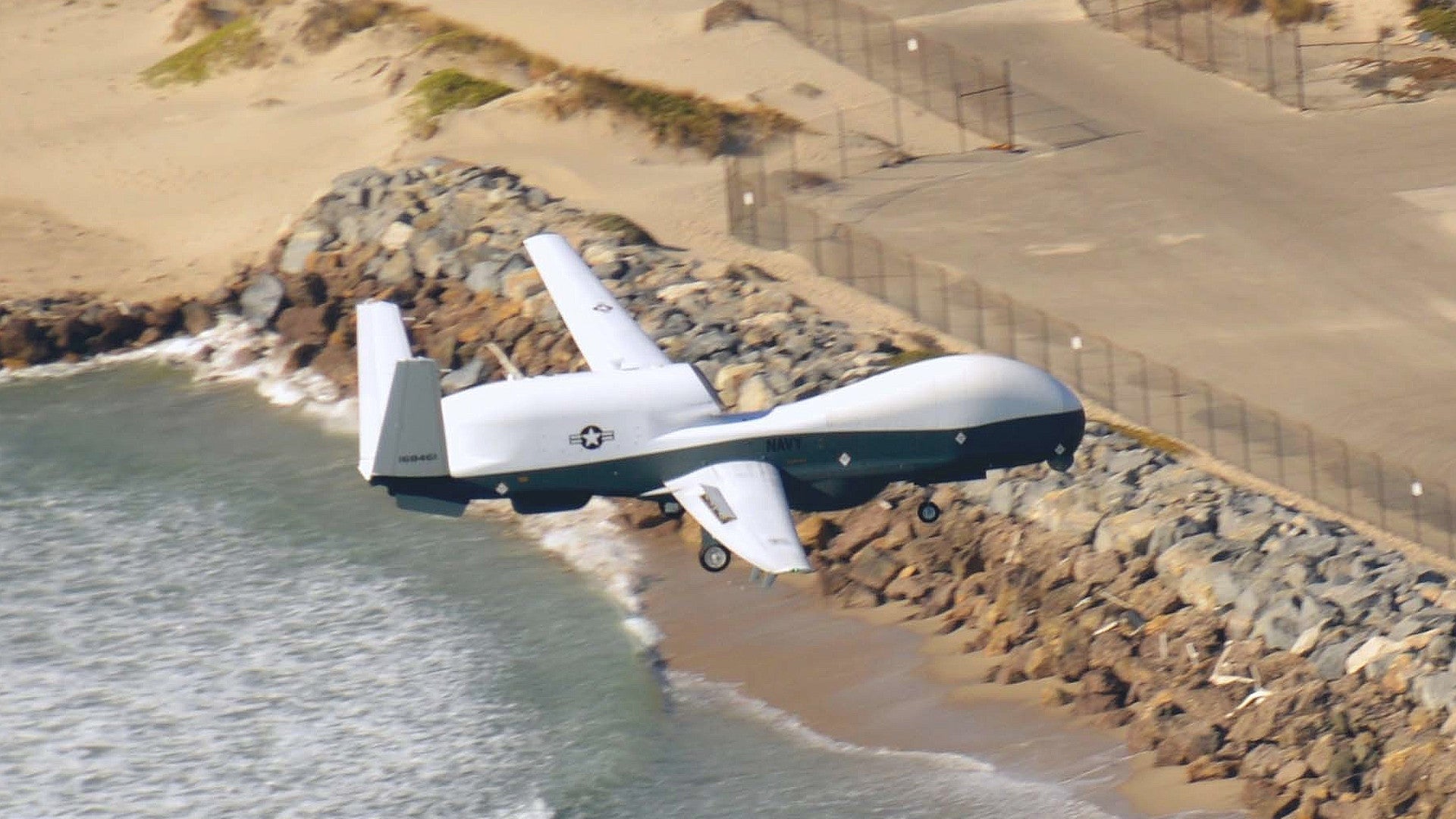One of the U.S. Navy’s new MQ-4C Triton drones went sliding down the runway on its belly at Naval Base Ventura County in Point Mugu, California earlier today, causing significant damage. Unmanned Patrol Squadron One Nine, or VUP-19, has been flying the unmanned aircraft at the base since June 2018, ahead of an eventual move to Andersen Air Force Base on Guam.
The mishap occurred at approximately 2:45 PST and an investigation into the cause is already ongoing. The MQ-4C had been conducting a test flight when it experienced a mechanical issue, according to the Navy. The controllers at Point Mugu aborted the mission and attempted to bring the drone back to base.
“As a precautionary measure, the pilots shut down the engine and attempted to safely land the aircraft on the runway,” the release said. “The aircraft’s landing gear did not deploy and the aircraft landed on the runway with its landing gear retracted.”
It’s not clear who was in control of the aircraft when it hit the runway. During earlier test flights in July 2018, VUP-19’s pilots flew the drones from ground control stations at Naval Air Station Jacksonville in Florida, while crews at Point Mugu were responsible for takeoffs and landings, according to Navy Times. The Navy and other U.S. military services routinely use this method, known as remote-split operations, for unmanned aircraft missions.

We also don’t know when whoever was at the controls decided to power down the MQ-4C’s single engine. If the drone was still in flight, this would have meant the pilots would have been forced to perform a dead-stick landing.
The Navy has classified the mishap as a Class A incident, which references to accidents that cause more than $2 million in damage, result in a fatality, or both. The Triton carries a sensor turret in its nose and additional systems, including its advanced radar, in its belly. A wheels-up landing could easily have damaged one or more of these sensitive and expensive items as well as the airframe.

The MQ-4C is a derivative of the U.S. Air Force’s RQ-4 Global Hawk drone and has a total unit cost of approximately $110 million. In June 2018, the Air Force lost one of its Global Hawks in a crash off the coast of Spain, which The War Zone was first to report.
It’s not clear yet how this setback will impact the schedule for VUP-19’s future deployment to Guam. Even before the mishap, the Navy had not made that timeline publicly available.
We will update this story as more information becomes available.
Contact the author: jtrevithickpr@gmail.com
